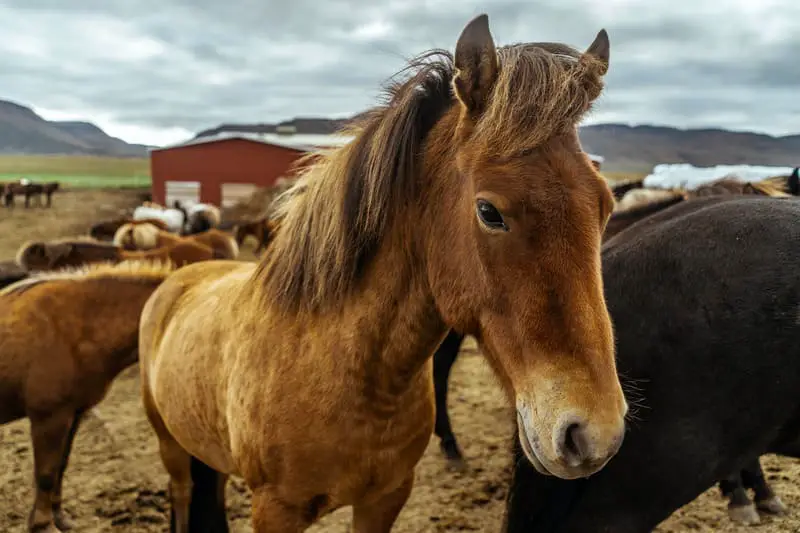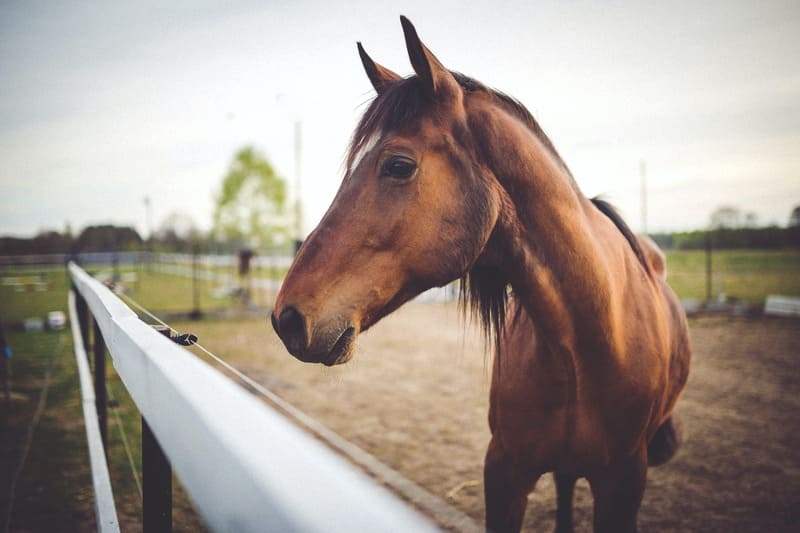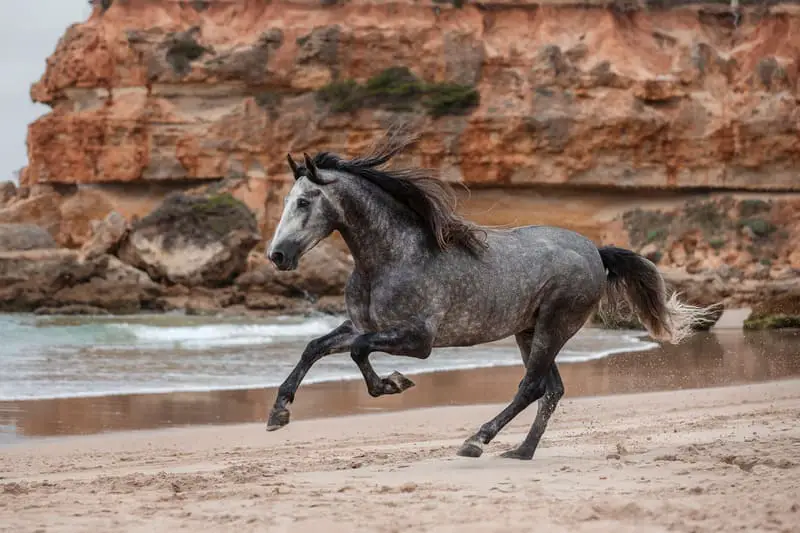Horses are magnificent creatures with a rich history of serving humans in various capacities, from transportation and agriculture to sport and companionship. These animals possess an array of unique features, including their tail and mane, which have intrigued humans for centuries. In this article, we will delve into the purposes of a horse’s tail and mane, exploring their functions, historical significance, and cultural symbolism.

Understanding Horse Anatomy
Before delving into the specific functions of a horse’s tail and mane, it’s essential to understand their basic anatomy and the role these features play in a horse’s overall physiology.
Horse Tail Anatomy
A horse’s tail is an extension of its spine, composed of a series of tail vertebrae, covered by muscles and skin. The tail can vary in length among individual horses, and it typically ends with a cluster of long hairs called the “tail hairs” or “tail dock.” The tail is highly mobile and capable of various movements, making it a versatile tool for the horse.
Horse Mane Anatomy
A horse’s mane consists of a band of hair that runs along the top of its neck, from the poll (the area between the ears) to the withers (the ridge between the shoulder blades). The mane is held in place by ligaments and muscles and can vary in length, thickness, and color. It typically stands upright, but its degree of erectness can vary between individual horses.
Functions of a Horse’s Tail
A horse’s tail serves several important functions, contributing to its overall well-being, communication, and protection.
1. Balance and Coordination
The tail plays a crucial role in helping a horse maintain balance and coordination, especially when engaged in rapid movements, such as running or jumping. When a horse is in motion, the tail serves as a counterbalance to its body, helping it make sharp turns and quick maneuvers.
2. Fly and Insect Defense
One of the most noticeable functions of a horse’s tail is its role in defense against flies and other insects. Horses use their tails to swat and shoo away annoying insects that may bite or irritate them. The constant swishing and flicking of the tail create a moving barrier that helps protect sensitive areas like the eyes and ears from insect bites.
3. Communication
Horses are highly expressive animals that use their bodies and vocalizations to communicate with each other. The tail is a vital component of this communication system. A raised tail can signal alertness or excitement, while a clamped or tucked tail can indicate fear or discomfort. Similarly, the position and movement of the tail can convey a horse’s mood and intentions to other horses and even to observant humans.
4. Reproductive Behavior
Horses also use their tails during reproductive behavior. In mares, tail-raising is a sign of receptivity, indicating their readiness to mate. Stallions may also raise their tails during courtship and mating rituals.
5. Protection
The long hairs at the end of a horse’s tail, known as the “tail hairs” or “tail dock,” help protect sensitive areas from the elements. For example, in cold weather, a horse may raise its tail and tuck it against its body to shield its genitalia from cold winds and moisture.
Functions of a Horse’s Mane
A horse’s mane serves various functions, some of which are similar to those of the tail, while others are unique to this specific feature.
1. Insulation and Protection
The mane helps to insulate a horse’s neck from the elements, such as rain and cold weather. It acts as a natural barrier that protects the neck and withers from direct exposure, helping the horse regulate its body temperature. In colder weather, a raised mane creates an insulating layer, trapping warm air close to the skin.
2. Sun Protection
The mane can also offer protection from the sun. In hot and sunny conditions, a dense and erect mane can help shade the horse’s neck and prevent sunburn. This is particularly important for horses with light-colored or sensitive skin.
3. Communication
Similar to the tail, the position and movement of a horse’s mane can be used for communication. An erect mane can signal excitement or alertness, while a relaxed or flopped-over mane may indicate a calm or contented state.
4. Historical and Cultural Significance
Throughout history, the horse’s mane has had cultural and aesthetic significance. In some cultures, long, flowing manes have been considered a symbol of beauty and nobility. Horses with elaborately groomed and decorated manes have been associated with royalty and prestige.
5. Grip and Tactile Sensation
The mane can serve as a grip for riders or handlers. When riding bareback or with minimal tack, riders can use the mane for balance and security. Additionally, the tactile sensation of running one’s fingers through a horse’s mane can be soothing for both horse and human.

Variations in Mane and Tail
Horses come in various breeds, each with distinct characteristics, including variations in mane and tail features. These differences can range from length and thickness to color and texture.
1. Length
The length of a horse’s mane and tail can vary widely among breeds and individual horses. Some breeds are known for their long, flowing manes and tails, while others have shorter, more utilitarian versions. For example, draft horses often have shorter manes and tails, while some gaited breeds may sport elaborate, cascading manes.
2. Thickness
The thickness of a horse’s mane and tail is also subject to variation. Thicker manes and tails are often seen in draft breeds, while finer or thinner manes may be found in lighter horse breeds.
3. Color
The color of a horse’s mane and tail can range from the same color as its body to a contrasting shade. While many horses have manes and tails that closely match their coat color, some display striking variations. Palomino horses, for instance, often have creamy or white manes and tails, while Pinto horses may exhibit contrasting patches of color.
4. Texture
The texture of a horse’s mane and tail can vary from silky and fine to coarse and rough. Some horses have exceptionally soft and luxurious manes, while others may have coarse, bristly ones. These variations can be influenced by genetics and environmental factors.
Grooming and Care
Proper grooming and care of a horse’s tail and mane are essential for the animal’s health and well-being. Regular grooming not only keeps these features in good condition but also helps strengthen the bond between horse and handler. Here are some key aspects of grooming:
1. Brushing
Regular brushing of the mane and tail helps remove dirt, debris, and tangles. It also stimulates the skin, promoting blood circulation and a healthy coat. A variety of brushes and combs are available for specific purposes, such as a mane comb for the mane and a tail brush or comb for the tail.
2. Cleaning
Occasional washing of the mane and tail is necessary to remove built-up dirt, sweat, and grime. Special equine shampoos and conditioners can be used to clean and condition these areas. After washing, thorough rinsing is crucial to prevent skin irritation.
3. Detangling
Manes and tails can become tangled and matted, especially in long-haired breeds. To prevent discomfort for the horse and make grooming easier, it’s essential to regularly detangle the mane and tail. This can be done by gently working through knots and tangles with your fingers or a detangling product.
4. Trimming
Trimming the mane and tail is common in some equestrian disciplines, such as dressage or show jumping, to achieve a tidy and polished appearance. Trimming can be done to even out the length or create a specific style, but it should be done with care to avoid damaging the hair.
5. Braiding
Braiding the mane and tail is a traditional grooming technique that not only helps maintain a neat appearance but also serves practical purposes. Braiding can prevent the mane and tail from getting tangled, especially during activities like dressage or jumping. It can also protect the hair from damage.

Cultural Significance and Symbolism
The mane and tail of a horse have held cultural significance and symbolism in various societies throughout history. Here are some examples:
1. Native American Tradition
In Native American cultures, the mane and tail of a horse were often decorated with beads, feathers, and other ornaments. These decorations were symbolic and held spiritual significance, representing the horse’s connection to the natural world and the warrior’s bond with their steed.
2. Medieval Europe
In medieval Europe, the appearance of a knight’s horse was a reflection of the knight’s status and honor. Horses were adorned with elaborate and decorative gear, including stylized manes and tails. The appearance of a knight’s horse signified the knight’s prowess and nobility.
3. Chinese Culture
In Chinese culture, the horse holds a special place in history and folklore. Horses have been depicted in art, literature, and mythology, often with emphasis on their flowing manes and tails, which symbolize strength, freedom, and endurance. The Chinese zodiac even includes the Year of the Horse.
4. Modern Equestrian Sports
In modern equestrian sports, grooming and presentation are essential, and the appearance of a horse’s mane and tail can impact its performance in competitions. Different equestrian disciplines have specific grooming standards and styles for manes and tails.
Conclusion
A horse’s tail and mane are not merely ornamental; they are integral to the animal’s anatomy and well-being. These features serve various functional purposes, from balance and coordination to protection from the elements. They are also essential tools for communication among horses and with humans. Understanding the significance of the tail and mane is not only important for equestrians but also for appreciating the historical and cultural symbolism associated with these magnificent creatures. Grooming and caring for a horse’s tail and mane is a reflection of the bond between horse and handler and ensures the horse’s physical and emotional well-being. In summary, the tail and mane are not just aesthetic features but essential components of what makes a horse a remarkable and revered animal.
